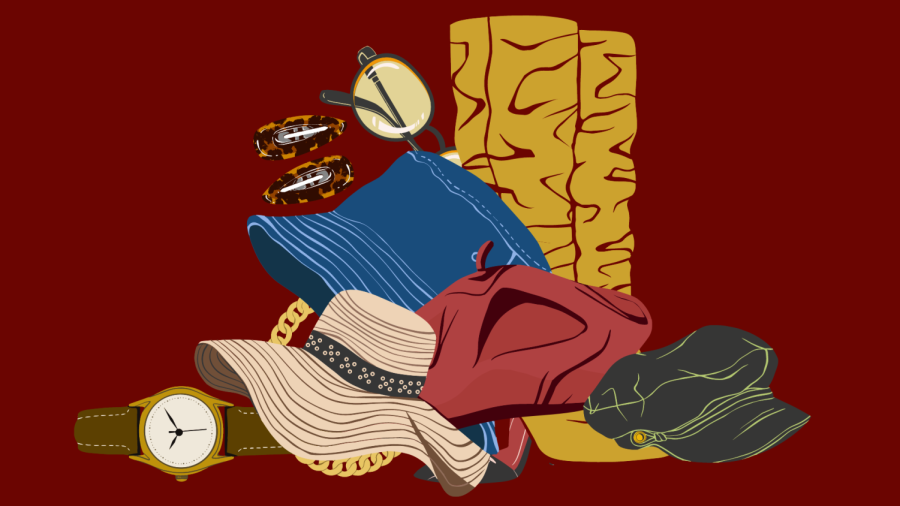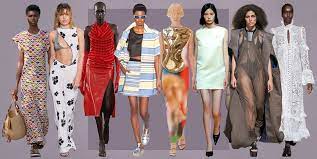Fashion
Mushroom Skin: the science of sustainable fashion
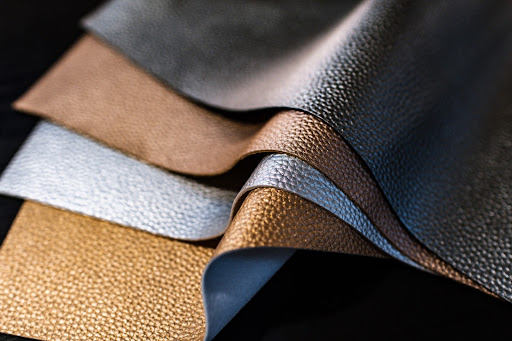
In early 2021, fashion brand Stella McCartney showed off some fashion concept pieces that made an industry sensation: leather leggings paired with a sports bra. They certainly look elegant and classy, but the highlight was not the clothes themselves, but what they were made of: mushroom leather, a new innovation in material science that we should definitely pay attention to.
The English designer’s house is already known for its ethical stance against the use of animal parts, particularly leather, in his collection. His latest work only adds to the long list of sustainable fashion pieces that McCartney has been featuring and selling for years.
A staple among fashion enthusiasts and the masses alike, leather has long been the subject of controversy and protest from activists and human rights groups for the way it is manufactured – cruelty to animals. However, when you develop leather from other sources, say mushrooms, you eliminate the need to get it from cattle. But can this vision of vegan leather become a reality?
Ecological fashion in mushroom skin
Stella McCartney is not alone in this effort, but sustainability has always been in her values. The latest black leather chic pair of hers is not only stunning and beautiful in terms of design, but the intention behind the outfit is extremely remarkable. To make this possible, the brand partnered with Bolt Threads, a materials engineering company that develops biomaterials.
Inspired by nature to create avant-garde pieces, Bolt Threads has developed and patented its own mushroom skin material called Mylo. A biotechnology company has managed to create Mylo, which has properties similar to real skin, based on mycelium, a type of organism that gives rise to fungi. It’s not technically fur, but the resemblance is unbelievable, except for the animal part!
Bolt Threads not only worked with Stella McCartney, but other fashion brands also took their first steps towards this new leather movement. Adidas also released a concept shoe that featured Mylo. The Stan Smith Mylo combines iconic Adidas style with an eco-friendly material derived from fungal roots. This is one of the shoe company’s attempts to reduce plastic waste.
Another biotech company, MycoWorks, has also patented Fine Mycelium mushroom skin. The company has teamed up with luxury fashion giant Hermès to bring us Sylvana, a glamorous bag made from mycelium developed by MycoWorks. Hermès worked on the bag at its French facility using Fine Mycelium provided by the biotech company.
Before the mushrooms: meet the mycelium
Okay, if you’re wondering how mushrooms turn into leather, this is more nuanced. In fact, scientists and fashion brands are searching for an underground root system of a fungus called Mycelium or Mycelia. Instead of collecting them yourself from the woods or forests where they are abundant, the material used for the so-called fungus skin is grown in laboratories.
The mycelium is the only representative of the fungal kingdom that can form complex structures. While not all mycelia have fungi, all fungi grow from mycelium. Under different conditions, the mycelium can form different structures. The mycelium necessary for mushroom skins is grown in laboratories, where various parameters (such as temperature and humidity) can be changed to create specific fibers. Biotech companies then convert them into useful materials using a variety of means. They can register their own formula or patent the process as they may differ from each other.
Other companies can use the clean mycelium to make their own products, such as packaging and now clothing. Getting mushroom roots would also be very ideal and practical because the growth of the mycelium only takes a few weeks or even days.
Surprisingly, thousands of species of mycelium have been discovered to date and many have yet to be classified. Who can say, maybe one of them will one day become a new fashion item and even end up in your wardrobe!
Un-leathering: A green future for fashion?
Bolt Threads, the company behind the Mylo brand of mushroom leather, refers to the introduction of its material as a way to “reverse leather.” And phasing out animal fur production is not only welcomed by many human rights groups, it’s also very good for the environment, as it’s extremely energy efficient.
For example, Bolt Threads claims that making Mylo produces less greenhouse gas compared to raising animals because less energy is used. This could significantly reduce the carbon footprint of leather-like materials for fashion and accessories. Creating leather from cattle is already an environmental nightmare, exacerbated by the chemical processes involved in processing. This is in addition to the already criticized meat industry for its significant contribution to global emissions.
It is also easier and less time consuming to grow mycelium, just a few weeks, as evidenced by biotech companies. Compare this to animal husbandry, which is much longer if you count the years. Therefore, it is potentially viable from an economic point of view. In addition, they are completely renewable, so their scarcity and depletion are the least of your worries.
And most importantly, mycelium-based products are biodegradable. This means that when your mushroom skin suit wears out, it can easily break down if you throw it away. While other types of leather use some fossil fuel-based chemicals in the process, mushroom leather avoids this. Therefore, its impact on the environment is reduced.
When will the green future arrive?
With the aforementioned promising benefits, fashion houses can create and develop products of the same quality that imitate leather, without all the frowned upon compromises. However, right now, these pieces that boast of being made with mushroom skin are still not available for public use. The uncertainty may lie in the various properties resulting from the development of the mycelium.
But with a little bioengineering magic (it’s science, but we think it’s magic), companies like MycoWorks and Bolt Threads promise to deliver the same high quality expected from regular leather. Additional research is currently underway aimed at fully exploiting the full potential of the mycelium outside of materials science.
We could only hope and wish that more fashion brands, local fashion stores or others would join this important cause victory. Bolt Threads mentioned on their website that their sustainable leather could be released to the public in 2022, and they are already partnering with other companies like Adidas and Stella McCartney to bring the concept of vegan leather to life.
As fashion continues to evolve, we shouldn’t just marvel at style changes and trends that come and go. We must also watch how the industry advances with awareness of its impact on the environment. Definitely one of the trends we need to pay attention to is being eco-friendly, striving to be sustainable and fashionable at the same time. And mushroom skin makes that dream come true.
According to the book’s author and biologist Merlin Sheldrake in an interview with The Guardian: “I am delighted to support the fashion world in its quest to become more sustainable.” He added that mushrooms can solve many of the problems we face. Perhaps mushroom leather is just the beginning of the concept of sustainability that is synonymous with elegance and fashion.
We think these vegan fashion items may first appear as luxury items, but we’ll keep our fingers crossed that they make it to fast fashion as soon as possible. Truly, this natural gift, combined with some engineering advances, can help us create a future where what we wear is 100% proud of our Mother Earth.
Fashion
Unveiling the Radiance of Thailand’s Beauty Industry: A Fashion Insider’s Perspective
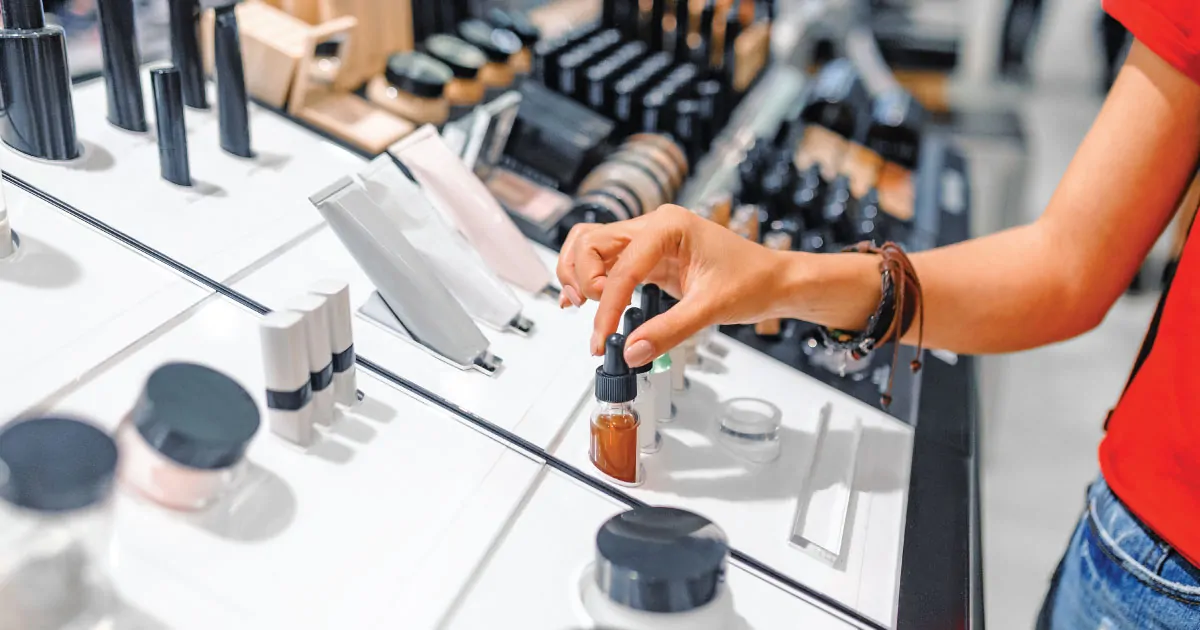
In the realm of beauty and fashion, Thailand stands as a vibrant beacon of innovation, tradition, and exquisite taste. Having been immersed in the fashion world for decades, I have encountered myriad expressions of beauty across the globe. Yet, there is something inherently mesmerizing about Thailand’s beauty industry that invites a deeper exploration. This exploration reveals not just the external facets of beauty but also reflects the intricate tapestry of Thai culture and the burgeoning sectors of entertainment that subtly complement this industry.
A Mélange of Tradition and Innovation
At the heart of Thailand’s beauty industry lies the harmonious blend of age-old traditions and cutting-edge innovations. Thai beauty regimens, deeply rooted in natural remedies and herbal secrets passed down through generations, continue to inspire and shape modern skincare and makeup products. This reverence for the natural world translates into an array of products that celebrate organic ingredients, echoing the lush landscapes and rich biodiversity of Thailand.
Simultaneously, Thailand’s beauty scene is no stranger to innovation. Bangkok, a cosmopolitan hub buzzing with creative energy, is home to countless beauty startups and established brands that are making waves on the global stage. These brands are redefining beauty standards, championing diversity, and embracing the unique features that characterize the beauty of Southeast Asia.
Fashion and Beauty: A Synergistic Symphony
The synergy between fashion and beauty in Thailand is palpable. Walking through the bustling streets of Bangkok or the serene alleys of Chiang Mai, one is immediately struck by the impeccable style and the radiant skin of the locals. It’s a testament to how deeply interconnected fashion and beauty are, with each influencing and elevating the other. Thai fashion designers often collaborate with beauty brands to create holistic looks that capture the essence of Thai aesthetics — a blend of boldness, elegance, and authenticity.
The Allure of Nightlife and Refined Leisure
The Allure of Nightlife and Refined Leisure Featuring สล็อตเว็บตรง100
The beauty and fashion industries in Thailand are curiously complemented by the nation’s refined nightlife and leisure culture. Imagine an evening that begins with a visit to an opulent venue where the thrill of strategy and chance unfold in an environment of sophisticated design and discretion, akin to the allure found at สล็อตเว็บตรง100. Here, amidst the soft clinking of glasses and the murmurs of anticipation, beauty and fashion find additional expressions. As enthusiasts of fashion and beauty, individuals frequent these settings not just for the entertainment but for the opportunity to showcase their style, mingle with like-minded aficionados, and immerse themselves in an atmosphere where glamour and elegance reign supreme.
These venues, emblematic of Thailand’s vibrant entertainment landscape, serve as a testament to the Thai penchant for blending tradition with contemporary pursuits. They offer a space where the beauty industry’s influence extends beyond the daylight hours, contributing to the night’s allure and mystique, much like the captivating and elegant play at สล็อตเว็บตรง100.
Conclusion: Thailand’s Global Beauty Statement
Thailand’s beauty industry, with its deep cultural roots and innovative outlook, is making a significant mark on the global stage. For someone who has spent a lifetime in the world of fashion, witnessing Thailand’s beauty evolution is both inspiring and illuminating. The country not only celebrates beauty in its myriad forms but also seamlessly weaves it into the fabric of everyday life and the sophisticated dimensions of its entertainment culture. Thailand invites us to redefine beauty, embracing it as an art form, a reflection of cultural heritage, and a celebration of individuality.
Fashion
Fashion to Figure: Empowering Fashion for Every Body

Fashion is a dynamic expression of identity, and “Fashion to Figure” stands at the forefront of inclusive fashion. In this article, we’ll delve into the brand’s rich history, its impact on body positivity, the significance of its collections, and its role in shaping the fashion landscape.
I. Introduction
Definition of “Fashion to Figure”
Fashion to Figure is more than just a brand; it’s a movement that redefines fashion norms. Founded on the principles of inclusivity, this brand caters to diverse body types, ensuring everyone feels confident and stylish.
Significance in the Fashion Industry
In a world where body diversity is often overlooked, Fashion to Figure emerges as a trailblazer, challenging traditional beauty standards. Its significance lies not only in trendy clothing but in fostering a sense of empowerment for individuals of all shapes and sizes.
II. History of Fashion to Figure
Founding and Early Years
The journey of Fashion to Figure began with a vision to break barriers. Founded in [Year], the brand set out to address the limited options available for plus-size individuals, pioneering inclusivity in the fashion industry.
Evolution Over Time
As the years passed, Fashion to Figure evolved, adapting to changing tastes and societal demands. The brand’s commitment to diversity remained unwavering, influencing the broader fashion landscape.
III. Inclusivity in Fashion
Addressing Diverse Body Types
One of Fashion to Figure’s core principles is acknowledging and celebrating diverse body types. The brand’s sizing options cater to a wide range, ensuring that fashion is accessible to everyone.
Celebrating Diversity in Fashion
Fashion to Figure not only addresses inclusivity but celebrates it. The brand’s campaigns and runway shows emphasize the beauty of diversity, challenging stereotypes and promoting a positive body image.
IV. Fashion to Figure Collections
Overview of Current Collections
Fashion to Figure continually introduces collections that blend current trends with timeless styles. From casual wear to elegant evening attire, the brand offers a diverse range of options for every occasion.
Popular Items and Styles
Certain items and styles have become synonymous with Fashion to Figure’s identity. Explore the must-have pieces that have captured the hearts of fashion enthusiasts worldwide.
V. Online Shopping Experience
User-Friendly Website Design
Navigating the Fashion to Figure website is a seamless experience. Discover how the brand prioritizes user-friendliness, allowing shoppers to find the perfect pieces with ease.
Size-Inclusive Features
Online shopping can be challenging for plus-size individuals, but Fashion to Figure has implemented size-inclusive features to ensure a satisfying and confident shopping experience for all.
VI. Fashion Trends and Inspirations
Staying Current with Fashion Trends
Fashion to Figure stays on the pulse of ever-changing trends, ensuring its collections are always fresh and exciting. Explore how the brand keeps up with the fast-paced world of fashion.
Drawing Inspiration from Fashion to Figure
Whether you’re a fashion enthusiast or a designer, Fashion to Figure serves as a wellspring of inspiration. Discover how the brand’s designs influence and inspire the broader fashion community.
VII. Impact on Body Positivity
Promoting Self-Confidence
Fashion to Figure goes beyond clothing; it promotes self-confidence. Learn how wearing the brand’s designs contributes to a positive self-image and empowers individuals to embrace their unique beauty.
Empowering Individuals through Fashion
Through its commitment to body positivity, Fashion to Figure empowers individuals to express themselves authentically. Explore real-life stories of how the brand has made a significant impact on its customers.
VIII. Celebrity Collaborations
Notable Partnerships
Fashion to Figure has collaborated with influential figures in the entertainment and fashion industry. Discover the noteworthy partnerships that have shaped the brand’s identity.
Influence on Fashion Culture
Celebrity collaborations have not only elevated Fashion to Figure’s profile but also contributed to a broader shift in fashion culture. Explore the brand’s influence on industry trends and consumer preferences.
IX. Sustainability Efforts
Eco-Friendly Initiatives
In an era where sustainability is paramount, Fashion to Figure takes steps to minimize its environmental impact. Explore the brand’s eco-friendly initiatives and commitment to ethical fashion.
Commitment to Ethical Fashion
Beyond style, Fashion to Figure values ethical practices. Delve into the brand’s commitment to fair labor practices, responsible sourcing, and overall ethical considerations in the fashion industry.
X. Customer Reviews and Testimonials
Positive Feedback
The true measure of a brand’s success lies in its customers’ satisfaction. Read firsthand accounts of individuals who have experienced the confidence-boosting effects of Fashion to Figure.
Addressing Concerns and Improvements
While the brand receives praise, it’s essential to address any concerns and improvements. Explore how Fashion to Figure actively listens to its customers and continually strives for excellence.
XI. Social Media Presence
Engaging with the Fashion Community
Fashion to Figure understands the importance of social media in today’s digital age. Discover how the brand engages with its audience, fostering a vibrant and supportive fashion community.
Influencer Collaborations and Campaigns
Influencers play a pivotal role in shaping trends. Learn about Fashion to Figure’s collaborations with influencers and the impact these partnerships have on the brand’s reach and influence.
XII. Fashion to Figure in the Media
Features in Magazines and Blogs
Fashion to Figure has garnered attention from prominent media outlets. Explore the brand’s features in magazines and blogs, highlighting its influence on mainstream fashion discussions.
Interviews with Founders and Designers
Get a glimpse into the minds behind Fashion to Figure. Read exclusive interviews with the founders and designers, gaining insight into the brand’s philosophy and future aspirations.
XIII. Challenges and Resilience
Navigating Industry Challenges
No success story is without its challenges. Explore the obstacles Fashion to Figure faced and how the brand’s resilience and adaptability have contributed to its continued success.
Success Stories and Adaptations
From challenges arise success stories. Discover how Fashion to Figure’s ability to adapt and overcome obstacles has led to triumphs that resonate with its audience.
XIV. Future Outlook
Anticipated Developments
What does the future hold for Fashion to Figure? Explore anticipated developments, including potential expansions, collaborations, and innovations that will further solidify the brand’s place in the fashion industry.
Continued Commitment to Inclusivity
As Fashion to Figure looks to the future, its commitment to inclusivity remains unwavering. Learn about the brand’s ongoing efforts to break barriers and create a fashion landscape that truly embraces every body.
XV. Conclusion
In conclusion, Fashion to Figure isn’t just a brand; it’s a movement reshaping the fashion narrative. From its humble beginnings to its current status as a beacon of inclusivity, Fashion to Figure has made a lasting impact on the industry.
Frequently Asked Questions (FAQs)
- Is Fashion to Figure only for plus-size individuals? Fashion to Figure primarily focuses on providing inclusive fashion for all body types, including plus-size individuals. However, its collections are designed to cater to a wide range of sizes.
- How can I stay updated on Fashion to Figure’s latest collections? To stay informed about Fashion to Figure’s latest releases and updates, you can follow the brand on its official social media accounts and subscribe to its newsletter.
- Are Fashion to Figure’s clothing items affordable? Fashion to Figure offers a range of price points to cater to different budgets. The brand strives to provide stylish and inclusive fashion at accessible prices.
- Does Fashion to Figure ship internationally? Yes, Fashion to Figure offers international shipping, allowing fashion enthusiasts worldwide to access its diverse and inclusive collections.
- How can I share my feedback with Fashion to Figure? Fashion to Figure values customer feedback. You can share your thoughts and suggestions through the brand’s official website or social media channels.
Fashion
Y2K Fashion: A Nostalgic Resurgence in Style
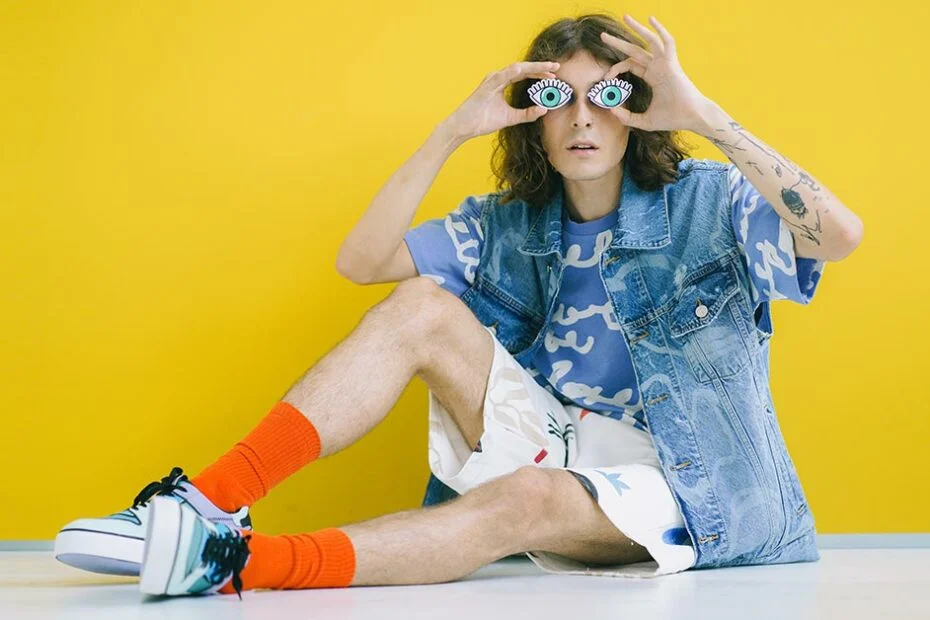
The early 2000s, often referred to as the Y2K era, was marked by bold and flashy fashion trends that left an indelible mark on pop culture. Fast forward to today, and Y2K fashion is experiencing a remarkable revival. This article delves into the resurgence of Y2K fashion, exploring its trends, celebrity influence, key pieces, brands, everyday wear, social media impact, DIY aspects, events, controversies, and the future of this nostalgic style.
Y2K Fashion Trends:
Y2K fashion was characterized by its bold and extravagant styles. Think futuristic elements, metallic fabrics, and a playful mix of colors. The fashion of this era was a manifestation of the optimism and innovation that marked the turn of the millennium.
Celebrity Influence:
Celebrities play a pivotal role in shaping fashion trends, and the Y2K resurgence is no exception. Notable personalities are embracing the Y2K aesthetic, and their influence is reshaping the modern fashion landscape.
Key Y2K Pieces:
Mini skirts, rhinestones, and chunky platform shoes – these were the staples of Y2K fashion. We explore these iconic pieces and how they are making a comeback in the wardrobes of fashion enthusiasts.
Y2K Fashion Brands:
Several brands have taken the lead in the Y2K revival, capitalizing on the nostalgia associated with the era. Collaborations between brands and celebrities further fuel the resurgence of Y2K fashion.
Y2K Fashion in Everyday Wear:
The Y2K style isn’t just reserved for special occasions. Learn how individuals are incorporating Y2K elements into their daily outfits, striking a balance between the old and the new.
Social Media Impact:
The rise of Instagram and TikTok has provided a platform for Y2K fashion to thrive. Influencers are setting the tone, showcasing their take on Y2K style and inspiring millions.
DIY Y2K Fashion:
For those who want a personal touch, DIY Y2K fashion is gaining popularity. Discover how enthusiasts are creating their own Y2K-inspired pieces while embracing sustainability in the process.
Y2K Fashion Events and Shows:
From runway shows to themed events, the fashion industry is celebrating the Y2K aesthetic. We explore how events and shows are contributing to the resurgence of Y2K fashion.
Critics and Controversies:
As with any trend, Y2K fashion has its critics. We address opinions on the revival and delve into controversies surrounding the appropriation of styles from the past.
Future of Y2K Fashion:
What does the future hold for Y2K fashion? We discuss the sustainability aspect of future Y2K trends and how the style is evolving to meet the demands of a changing world.
Unveiling the Y2K Aesthetic
In the ever-evolving landscape of fashion, trends from the past often find their way back into the spotlight. Y2K fashion is one such nostalgic resurgence that has taken the style world by storm. Defined by its bold, futuristic, and often eccentric aesthetic, Y2K fashion encapsulates the essence of the early 2000s, bringing back memories of iconic pop culture moments.
The Rise of Y2K Fashion Icons
The Influential Icons: During the Y2K era, fashion icons emerged, leaving an indelible mark on the industry. Celebrities like Britney Spears, Paris Hilton, and Justin Timberlake became synonymous with the Y2K aesthetic, influencing a generation with their daring style choices. Today, their impact is reflected in the resurgence of spaghetti straps, cargo pants, and bedazzled accessories.
Key Elements of Y2K Fashion
Futuristic Fabrics and Metallic Hues
Shimmering Revival: Y2K fashion is characterized by its embrace of futuristic fabrics and metallic hues. Shiny and iridescent materials create a sense of otherworldly glamour, reflecting the technological optimism of the early 2000s. Incorporating metallic elements into your wardrobe instantly adds a touch of Y2K flair, capturing the essence of a bygone era with a modern twist.
Logomania: Branded Fashion Takes Center Stage
Branding Brilliance: Logo-centric clothing was a hallmark of Y2K fashion. Logomania, the trend of prominently featuring brand logos on clothing, symbolized a cultural shift towards consumerism and brand awareness. Today, fashion enthusiasts are rediscovering the allure of logo-heavy pieces, celebrating the bold branding that defined the Y2K era.
How to Embrace Y2K Fashion Today
Thrifting for Timeless Treasures
Thrifting Triumphs: One of the most sustainable and budget-friendly ways to embrace Y2K fashion is through thrift shopping. Thrifting for Y2K-inspired pieces not only adds unique finds to your wardrobe but also contributes to a more eco-conscious approach to fashion. Seek out nostalgic gems like cargo pants, mini skirts, and bedazzled accessories to curate an authentic Y2K look.
DIY Customization for a Personalized Touch
Expressive DIY: Y2K fashion encourages self-expression, and what better way to embody this spirit than through DIY customization? Transform plain pieces into Y2K masterpieces by adding rhinestones, patches, or playful embellishments. Unleash your creativity to capture the essence of the DIY movement that defined the early 2000s.
Y2K Fashion in Contemporary Runways
Influence on High-End Designers
High-End Homage: The Y2K aesthetic has transcended nostalgia and influenced high-end designers on contemporary runways. Prominent fashion houses have incorporated Y2K-inspired elements into their collections, solidifying the style’s status as a timeless and influential force. From holographic fabrics to futuristic silhouettes, Y2K continues to shape the trajectory of high-end fashion.
Conclusion:
In conclusion, the Y2K fashion revival is more than just a nostalgic trip down memory lane. It’s a dynamic movement shaping contemporary fashion. The boldness and innovation of Y2K style continue to resonate, leaving a lasting impact on the fashion industry.
FAQs
- Is Y2K fashion only about bold and flashy styles?
- While bold and flashy styles are characteristic of Y2K fashion, it also includes futuristic elements and a mix of colors.
- How are celebrities influencing the Y2K fashion revival?
- Celebrities are embracing Y2K fashion, setting trends and influencing the industry through their fashion choices.
- Can I incorporate Y2K elements into my daily wardrobe?
- Absolutely! Y2K fashion can be seamlessly integrated into daily wear by mixing iconic pieces with modern styles.
- Are there sustainable aspects to Y2K fashion?
- Yes, the DIY trend in Y2K fashion often emphasizes sustainability, promoting creativity and eco-friendly practices.
- What’s the future of Y2K fashion?
- The future of Y2K fashion involves a focus on sustainability and an evolution of the style to adapt to changing fashion landscapes.
-

 Entertainment1 year ago
Entertainment1 year agoAdmiral casino biz login
-

 Entertainment2 years ago
Entertainment2 years agoHow Much Does The Rock Weigh
-

 Entertainment2 years ago
Entertainment2 years agoDownload Popular Latest Mp3 Ringtones for android and IOS mobiles
-

 Entertainment2 years ago
Entertainment2 years agoTop 10 Apps Like MediaBox HD for Android and iPhone
-

 LIFESTYLE2 years ago
LIFESTYLE2 years agoWhose Heartland?: The politics of place in a rural–urban interface
-
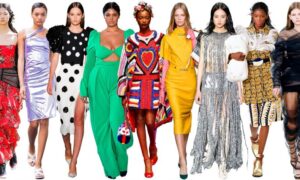
 Fashion3 years ago
Fashion3 years agoHow fashion rules the world
-

 Fashion Youth2 years ago
Fashion Youth2 years agoHow To Choose the Perfect Necklace for Her
-

 Fashion Today2 years ago
Fashion Today2 years agoDifferent Types Of lady purse


